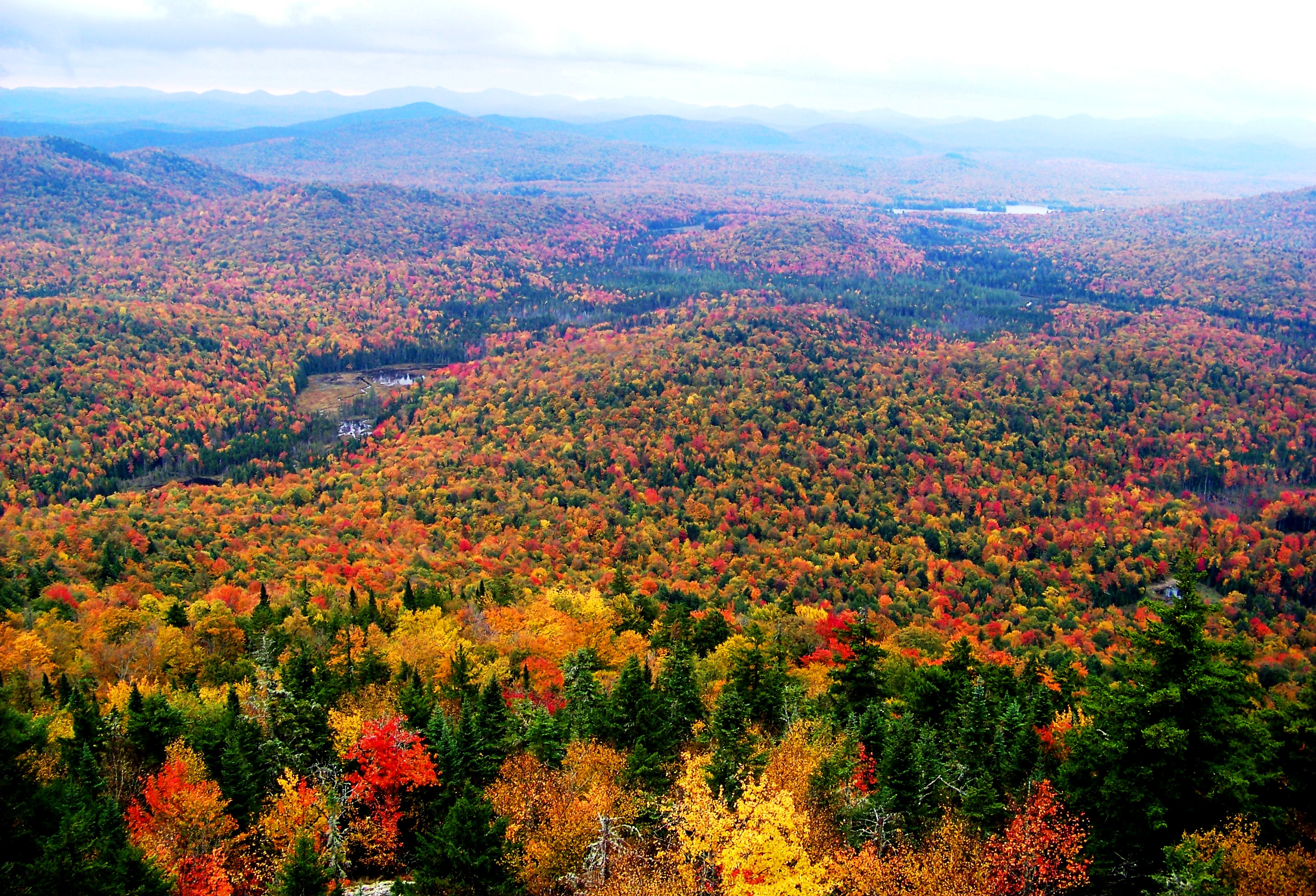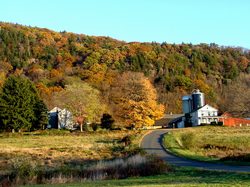As the amount of daylight gets shorter in the fall chlorophyll production in leaves slows. Less sugars to break down will in turn lessen the intensity of the red color.

Fall Foliage And Climate Change Crandall Park Trees
Drought and Climate Change Could Throw Fall Colors Off Schedule.

What affects fall colors. Low temperatures above freezing will favor anthocyanin formation producing bright reds in maples. Sunny days and cool nights are the key weather ingredient for brilliant fall colors. To learn more about the different colors and their associated emotions as well.
Like the weather soil moisture varies greatly from year to year. Factors like cloud cover could affect the amount of light that the trees are exposed to. Will it mute the colors.
Why leaves change color. Fall colors emerge when the growing season ends and trees stop photosynthesizing. A factor in the fall color display that is not so obvious is the weather leading up to the shortening of the days which is the cue for leaves to produce less chlorophyll and begin the fall show of color before losing their leaves for winter.
As we said. When used with your window displays and in-store signage the right fall color scheme has the power to make your customers feel just as warm and cozy as their favorite sweater and trigger a purchase. As you can see weather does play a crucial part in how colorful the Fall foliage is.
Precipitation affects the color show drought and excessive rainfall are both detrimental to foliage. The types of tree species in a forest are an even bigger factor and forest composition in the eastern US. However early frost will weaken the brilliant red color.
The best weather conditions are bright sunny days and cool but not frosty nights. Trees use temperature only as a secondary cue. A dry year can cause leaves to brighten early or lateor just turn brown.
Summer weather wont do much to influence foliage color. Temperature light and water supply have an influence on the degree and the duration of fall color. With global warming on the rise there is no telling what our future Fall seasons are going to look like.
Has changed dramatically over the. Rainy andor overcast days tend to increase the intensity of fall colors. Due to the unseasonably warm temperatures chlorophyll production continued well into the fall.
The right weather during the autumn can promote more intense color production. Color is one of the few mediums that affects human emotion and mood as well as consumer thinking and rational. Recent studies investigated potential effects of climate change on fall foliage.
Those conditions include a nice wet spring. Researchers from Harvard University. If global warming results in warmer fall temperatures either during the day or night this would tend to delay fall colors to later in the season.
And since these lofty leaves are the most exposed to light by that same respect theyre also the first to respond to falls lessening daylight hours -- another event which results in the slowdown of chlorophyll and the promoting of color change. A warm period during fall will also lower the intensity of autumn colors. The amount of rain in a year also affects autumn leaf color.
An early frost speeds up the fall of the leaves and brings a quick end to. Decreased light intensity reduces the rate of photosynthesis and the amount of sugar stored within the leaves. 36 Related Question Answers Found Does a rainy summer mean a colorful fall.
Ideal conditions for the beautiful colors of fall stem back to much earlier in the year. Prolonged chlorophyll production masked the vibrant yellow orange and red colors of other fall. A severe drought can delay the arrival of fall colors by a few weeks.
These colors the yellow the red are a kind of sunscreen and they protect the cells in which chlorophyll is being broken down and the tree is doing everything it can to get the. Photosynthesis or the production of sugars that depend on. The reds anthocyanins which require sunlight for production are enhanced by cold and sunny days.
A warm wet period during fall will lower the intensity or brightness of autumn colors. The best time to enjoy the autumn color. The amount of moisture in the soil also affects autumn colors.
Climate isnt the only thing that affects fall colors. Rainy and windy weather during the autumn can knock leaves down prematurely thereby shortening the color display at its peak. Autumn has largely held its ground across much of the eastern United States and Canada with only fleeting glimpses of winterlike weather in recent weeks.
The trees stop producing chlorophyll the green pigment in. A severe frost will kill the leaves turning them brown and causing them to drop early. A late spring or a severe summer drought can delay the onset of fall color by a few weeks.
Warm fall temperatures can lower the intensity of fall colors and even trigger leaf drops before the colors have the opportunity to change. Then how does weather affect color change in leaves. It might especially if the disconnect between daylength and temperature becomes.
For brilliant fall colors to occur a warm wet spring followed by calm summer weather and warm sunny fall days with cooler nights are needed. The weather setup started to unfold Tuesday as a storm bringing another dose of. The leaves change color mainly in response to the decrease of daily sunlight.
Weather Affects Color Intensity. The slightest changes in temperature moisture in the soil or even the length of the previous season can all affect Fall colors. A favorable mild summer without too many hot or dry days.
Leaves begin to turn before we have any frosts. The best autumn colors come when theres been. If the fall is cool they hasten the development of their fall color while if it is warm they procrastinate and delay it.
The riot of colors that erupts on trees each fall. The brilliance of a fall color season is a function of the weather. The answer is a little bit yes and a little bit no.
A warm wet spring favorable summer weather and warm sunny fall days with cool nights should produce the most brilliant autumn colors. The countless combinations of these two highly variable factors assure that no two autumns can be exactly alike. A drab autumn has lots of cloudy days and warm nights.
AccuWeather forecasters say that is all about to change as a large snowstorm develops and targets portions of the north-central US.

Factors Influencing Autumn Leaf Color Harvard Forest
How Weather Affects Fall Colors Msu Extension

0 Response to "What Affects Fall Colors"
Post a Comment